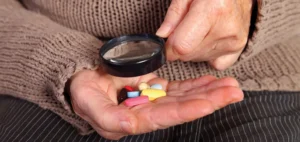What Is Participant Safety in Clinical Trials?
Participant safety is the foundation of every reputable clinical study. From the earliest stages of planning, comprehensive steps are taken to safeguard each volunteer’s physical, emotional, and confidential well-being. Before any trial begins, established protocols are reviewed by regulatory agencies and ethical boards. These protocols focus on minimizing risks, monitoring for side effects, and making sure everyone involved receives clear information. The ultimate goal is to protect volunteers as they help researchers test new therapies and procedures.
Rigorous oversight ensures that only interventions with a strong scientific rationale progress to human testing. People who take part in clinical trials can expect multiple layers of checks, supportive healthcare teams, and transparent communication. Because of these systems, modern clinical research now offers more protection for participants than ever before, making safety a daily priority rather than an afterthought.
The Importance of Clinical Trials for Safe Medical Progress
Clinical trials are critical in advancing medicine, ensuring that everything from new cancer treatments to vaccine breakthroughs passes strict safety tests before reaching doctors and patients. Without clinical trials, medical progress would be a matter of risk and guesswork—leaving patients vulnerable to unproven or dangerous interventions. Thanks to the careful structure of these trials, every approved drug or device you encounter in healthcare today has been thoroughly examined for risks and side effects.
Historically, the need for robust oversight became clear after tragic incidents—like the thalidomide crisis of the 1960s—led to tighter standards and regulations. Patients and healthcare providers can now have confidence that modern trials are carefully reviewed and monitored, reducing the chance of preventable harm.
Phases of Clinical Trials and Their Safety Measures
Every clinical study follows a well-defined sequence of phases, each designed to build on safety insights from the previous one. Before human trials, preclinical studies are completed in laboratories and sometimes with animal models. Once safety is established, trials move into:
- Phase I involves a small group of healthy volunteers (or sometimes patients with the illness) to identify safe dosages and early side effects. Be careful and frequently monitor for even minor adverse reactions.
- Phase II: Expands to a larger group and focuses on how well the new approach works while continuing to assess its safety in more diverse participants.
- Phase III: The treatment is tested against the standard of care in hundreds or thousands of volunteers, collecting robust data without compromising safety monitoring. Any severe or unexpected side effect is quickly flagged and addressed.
- Phase IV: Conducted after a treatment is approved, this phase tracks long-term safety and performance in the general population, catching rare or delayed side effects.
These phases are not only about proving effectiveness but are also built with routine check-ins, lab tests, physical exams, and 24/7 issue reporting to ensure swift response to adverse events.
Ethical Oversight and Informed Consent
No trial can begin without the approval of an independent ethics committee or Institutional Review Board (IRB). These groups, comprised of medical experts, lay people, and ethicists, review study plans for fairness, clarity, and risk/benefit balance. They confirm that studies don’t exploit vulnerable populations or expose anyone to unnecessary harm. Their involvement doesn’t end at the approval stage—they offer ongoing oversight, assessing new risks or emerging data as trials progress.
Central to ethical conduct is informed consent. Every participant receives a clear explanation of their rights, the study’s purpose, possible risks and benefits, and their freedom to withdraw at any time. Informed consent is not a single signature but an ongoing conversation where questions are encouraged and answered honestly.
Monitoring and Reporting Adverse Events
Trials are structured so that every unexpected symptom, side effect, or change in health is recorded and reported. Participants routinely check in with research staff and medical teams. If a serious problem arises, safety protocols are triggered immediately, which may involve halting or modifying a study. Periodically, data is reviewed by an independent safety board that can recommend protocol changes or early termination if risks outweigh potential benefits.
Sophisticated reporting systems and real-time monitoring have made studies more responsive. Updates about safety findings are often communicated to participants, the broader healthcare community, and relevant oversight authorities, increasing trust and transparency in the entire research process.
Modern Innovations That Support Safety
New technology has revolutionized how clinical trials are conducted and, more importantly, how patient safety is preserved. Wearable devices track vital signs, remote monitoring allows for real-time assessments, and data management software improves team communication. Advancing clinical trials with artificial intelligence and better digital tools means that dangerous trends or problems can be recognized suspiciously early—sometimes before a participant experiences symptoms.
The healthcare industry also emphasizes broader inclusion, recruiting people from different backgrounds to ensure that safety information is broadly applicable. New ideas in logistics now allow more people—especially those outside major urban centers—to participate safely using telemedicine and local labs.
Common Questions and Safety Myths
Some people hesitate to join a clinical trial because of uncertainty or fear about what might happen. Common misconceptions include believing that participants can be treated as “guinea pigs” or may receive no real care. In truth, extensive safeguards exist to ensure patient health remains front and center throughout every trial.
- Will I receive a placebo? Many studies compare new treatments to the best current care, not just a placebo. When placebos are necessary, participants are always told upfront, and ethical boards ensure it is appropriate.
- Could I lose my current treatment? In most cases, participants continue with standard therapies unless a new treatment is expected to be superior—and this transition only happens with explicit consent and medical supervision.
- Am I at more risk than other patients? Safety monitoring and expert teams actually provide participants with closer attention and more frequent health assessments than typical care.
Honest conversations with research coordinators and healthcare teams can address any lingering concerns and ensure volunteers feel confident and respected at every step.
The Future of Participant Safety in Clinical Research
As clinical trials evolve, participant safety remains the main focus. Thanks to lessons learned from decades of research, future studies will likely benefit from greater collaboration, more advanced technology, and even stronger safeguards. This landscape promises continued medical progress, but always with an unwavering commitment to the people who make such progress possible—trial volunteers.
Anyone considering participating in a clinical trial should feel encouraged by the care and attention dedicated to their well-being at every stage. Whether participating for access to new treatments or a desire to help advance science, volunteers can trust that their safety will always come first.










